This blog was reviewed by lactation consultant Olivia Hinge on 03/05/24
When your baby’s feeding on one breast, you might have noticed the other breast springing into action and releasing milk. So, what’s with that? It’s your let-down, which is the process that makes milk flow (1) from the breasts during feeding. It can happen in both breasts, which means the second breast can sometimes drip milk.
What is milk let-down?
When you first begin breastfeeding or pumping, it might take a few moments before the milk flow begins. This is because the milk let-down reflex, also known as the milk-ejection reflex (MER), needs to occur for milk to leave the breast.
When your baby latches to the breast, or once you start using your breast pump, this stimulates the nerves of the nipple, which sends a message to your brain (2) to start releasing the hormones prolactin and oxytocin into the bloodstream.
Prolactin is the hormone responsible for triggering milk production within the body, while oxytocin causes the breast to actually release the milk — this is what’s known as a ‘let-down’.
The let-down reflex varies from woman to woman (3). For some, it might take a matter of seconds, while for others, it might take minutes for a let-down to begin. It can happen in both breasts simultaneously, or it might only happen in one breast at a time. Our bodies are all different, so it’s important not to compare yourself to others.
What does a milk let-down feel like?
A let-down will feel different for everyone. Some women might feel the let-down reflex quite intensely, while others might not feel anything. Some common sensations include:
A tingling sensation in the nipples.
Fullness in the breast.
Leaking milk flowing from the other breast.
Menstrual-like cramps from your uterus contracting.
A warm or burning sensation in the breasts.
For some women, the initial milk let-down and the sensation of breast milk flowing can feel quite uncomfortable, and may even be painful.
Signs of the milk let-down reflex that you might notice from your baby include:
A change in your baby’s sucking pattern, from short and fast to slower and longer once the milk has let down.
Exaggerated gulping and swallowing.
Milk let-down tends to happen within 2 minutes of nipple stimulation. Because it’s a hormonal process rather than a localized one, both breasts will release milk even if you’re only feeding or pumping on one breast. The ‘unused’ breast will usually let down within 10 seconds of the other.
In some cases, you might not feel a let-down at all. This doesn’t mean that it isn’t happening, or that anything is wrong; it’s simply that the sensations aren’t noticeable. If your baby is showing signs of healthy feeding and nutrition then there’s no need for concern. However, if you’re feeling worried, contact your doctor or a lactation consultant for advice.
Why does my milk let down randomly?
While the sucking sensation on the nipple stimulates milk let-down, it can also occur at other times — sometimes when you aren’t expecting it. It can also kick in a few seconds before you begin to breastfeed, so it’s worth having a cloth to hand to mop up any spills (or using Elvie Catch to harvest any unexpected drops of milk).
You might experience symptoms of a let-down when you hear your — or someone else’s — baby cry. It can also happen if you go for a long time without breastfeeding or pumping and your breasts become full.
A Let-down can also be triggered if you’re experiencing strong emotions like anger, sadness or general stress – these emotions can trigger an oxytocin release (4). Your body may perceive these sensations as a sign to release milk.
How to get milk to let-down
It’s normal to encounter hiccups on your breastfeeding or pumping journey. If you’re having problems with your let-down there are ways to encourage it. Most of these techniques focus on relaxation and the mom-to-baby connection. Some tips include:
Trying a warm drink or listening to calming music.
Having a warm shower, or if there’s no time for that, placing a warm flannel on your breast for a few minutes before starting.
Gently massaging your breasts. Stroke your breast towards the nipple with the flat of your hand or the edge of a finger. Gently roll your nipple between your fingers.
Thinking about your baby or holding them close with skin-to-skin contact.
Deep breathing.
Being consistent with your routine before each feeding session.
Sometimes, pumping can be slower to stimulate the milk ejection reflex than nursing. If you are pumping, try to bring your baby to mind by:
Looking at a picture of them.
Smelling an item of their clothing.
Watching videos or listening to a recording of them.
Problems with the your let-down reflex
Breastfeeding and, in particular, the breastfeeding let-down response, isn’t always plain sailing. Sometimes you can experience difficulties, like a slow or painful let-down reflex, or even overactive or forceful let-down.
These issues can be overwhelming and cause frustration, or even lead to other breastfeeding challenges — but whatever the reason for your let-down issue, there are ways to help.
Underactive or slow let-down
Slow let-down, or a delay in the let-down reflex response, can be caused by any number of things including stress, temperature, pain, and alcohol or caffeine consumption.
Try to massage the breast before feeding or pumping to help stimulate a let-down. If you can pump or express milk by hand before putting your baby to your breast, it may help to create a smoother transition. Make sure you drink lots of fluids to stay hydrated but try to avoid tea, coffee or alcohol.
Overactive let-down
Some women experience an overactive let-down. This means that the flow of milk is too quick and forceful for the baby to comfortably drink, and it can occur as a consequence of milk overproduction or oversupply (5). When this happens, your baby might start to cough or splutter or pull away from your breast, bite the nipple, or show other symptoms after feeding such as excessive gas, frequent spit-ups, or explosive, frothy, green poop.
To help with an overactive let-down, try the following:
Keeping a cloth to hand to catch your milk when it first lets down, and putting your baby to the breast after the first let-down eases.
Avoid pumping before or after feeds – this will stimulate the breast and keep you producing too much milk.
Feeding in a laid-back position to let gravity slow the flow of breast milk.
Speak to a lactation consultant or other health professional to review your baby’s oral function.
Painful let-down
Milk let-down can be painful for women, particularly if your breasts are engorged due to overproduction of milk.
As your body becomes used to breastfeeding, pain should ease – if it doesn’t, it may be caused by something other than the let-down process. If pain persists as you feed or pump, talk to your doctor or a lactation consultant.
Sometimes pain can signal another condition such as mastitis. Mastitis is a breast infection that often occasionally requires antibiotics. If you notice intense pain and a fever or flu-like symptoms, seek medical advice from your doctor.
Dysphoric Milk Ejection Reflex (D-MER)
If you find that you’re experiencing an abrupt emotional ‘drop’ just before or during the release of milk, this is known as Dysphoric Milk Ejection Reflex (6). Some experts believe that it may be caused by a brief drop in dopamine, a neurotransmitter that plays a role in regulating emotions and motivation. D-MER can be particularly difficult to deal with (especially if you’re new to breastfeeding) and may include feelings of anxiety, sadness, anger, or hopelessness.
Symptoms of D-MER include:
Anger or rage
Agitation or irritability
Sadness
Hopelessness
Shame and guilt
In some cases, physical symptoms may also arise, such as tension in the breasts or stomach.
If you’re struggling with D-MER, just remember — it’s not a permanent disorder, and it is treatable. Don’t ever suffer in silence. Speak with a lactation consultant or talk to your doctor — they should be able to provide guidance and support. For more information, visit D-MER.org.
Making the most of let-down milk
Let-down often occurs in both breasts, meaning that your other breast might leak milk while feeding with the other. If you want to collect and store it, the Elvie Catch is what you need – we made it to help mamas stay leak-free and save their milk. It holds up to 1 oz / 30ml of milk in each cup, so you’ll have no more wasted milk during feeding.
Storing your breast milk
Breast milk can be stored in the refrigerator for up to 4 days, or in the freezer for up to 6 months (7) in a sterilised container or special breast milk storage bags.
In general, the accepted guidelines for storing breast milk are:
In the fridge: Breast milk can be stored in the back of the fridge (at a temperature of 39° F/4°C or lower) for up to 4 days.
In the freezer: Breast milk can be stored in the freezer (at 0° F/-18°C or lower) for up to 6 months.
At room temperature: Breast milk can be stored at room temperature (77°F/25°C or lower) for up to 4 hours. It's important to use the milk within this time frame to ensure it remains fresh and safe for the baby to drink.
For more information, visit our guide on how to store and reheat breast milk.
References
Breast Feeding: Getting Started, Johns Hopkins Medicine
The physiological basis of breastfeeding, Infant and Young Child Feeding: Model Chapter for Textbooks for Medical Students and Allied Health Professionals, World Health Organization, 2009
What is the Let Down Reflex?, WebMD, April 2023
The modulation of emotional and social behaviors by oxytocin signaling in limbic network, Rodrigo Triana-Del Rio, Sayali Ranade, Jahel Guardado, Joseph LeDoux, Eric Klann, Prerana Shrestha, Front. Mol. Neurosci., 17 November 2022
What is Breast Milk Oversupply?, Cincinnati Children’s, May 2023
Dysphoric milk ejection reflex: A case report, Int. Breastfeeding J., June 2011
Proper Storage and Preparation of Breast Milk, CDC, January 2022


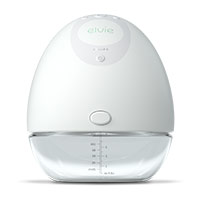

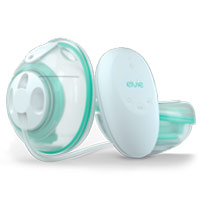

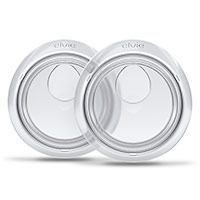
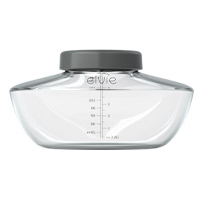
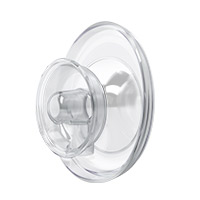

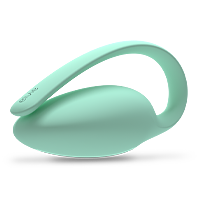
 9 minute read
9 minute read